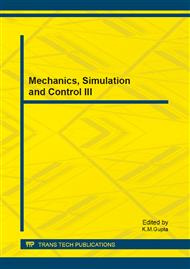p.397
p.401
p.405
p.411
p.417
p.422
p.427
p.433
p.441
Industrial Automation Using Wireless Mesh Network
Abstract:
The use of wireless technology in industrial automation offers a number of potential benefits, from the obvious cost reduction brought about by the elimination of wiring to the availability of better plant information, improved productivity and better asset management. However, its practical implementation faces a number of challenges: lack of a universally agreed standard, security, noisy environment, reliability. Since there is no IEEE standard for using wireless technology in industrial automation it is not possible to use the conventional industrial automation system. We also need better transmission rate for reliable communication. In this paper we proposed an industrial automation system based on wireless multi hop network using FPGA. The multi hop network will provide the reliable communication to central control unit and FPGA will provide the reconfigurable high speed data communication. The design is implemented in Xilinx Spartan 3E FAGA kit and results shows that it will be the solution for future industrial automation problems.
Info:
Periodical:
Pages:
417-421
Citation:
Online since:
August 2013
Authors:
Price:
Сopyright:
© 2013 Trans Tech Publications Ltd. All Rights Reserved
Share:
Citation:


